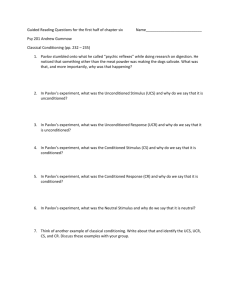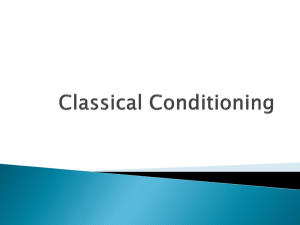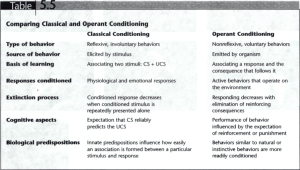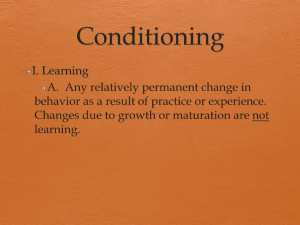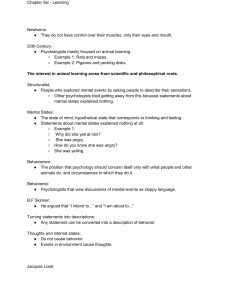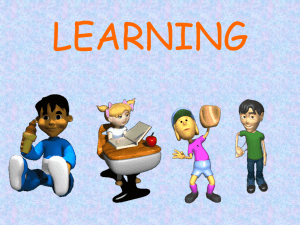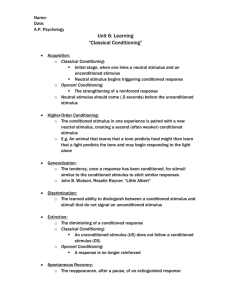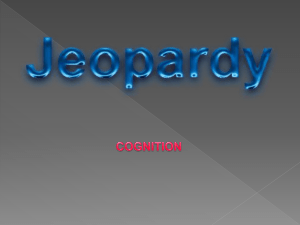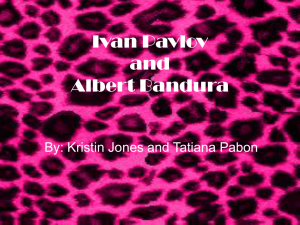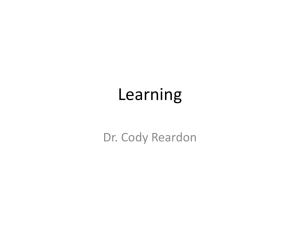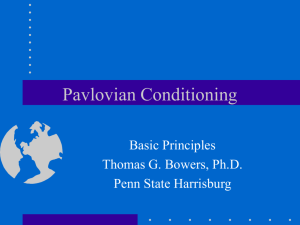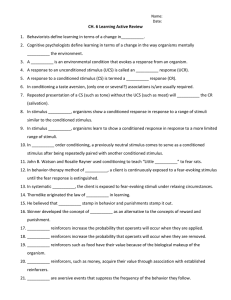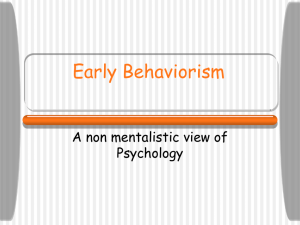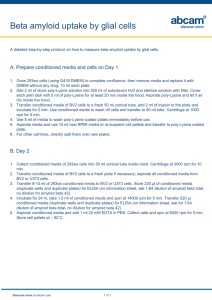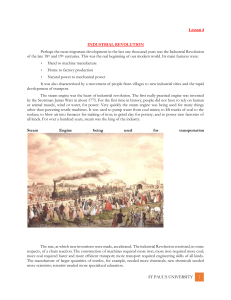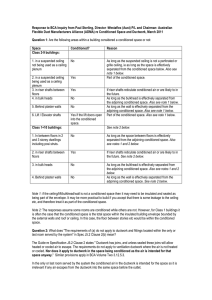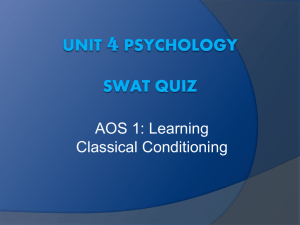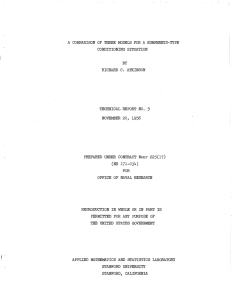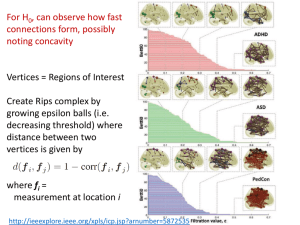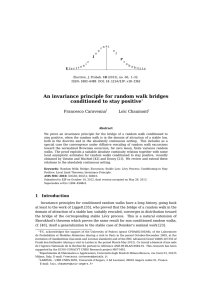Pavlov Would Be Proud
advertisement
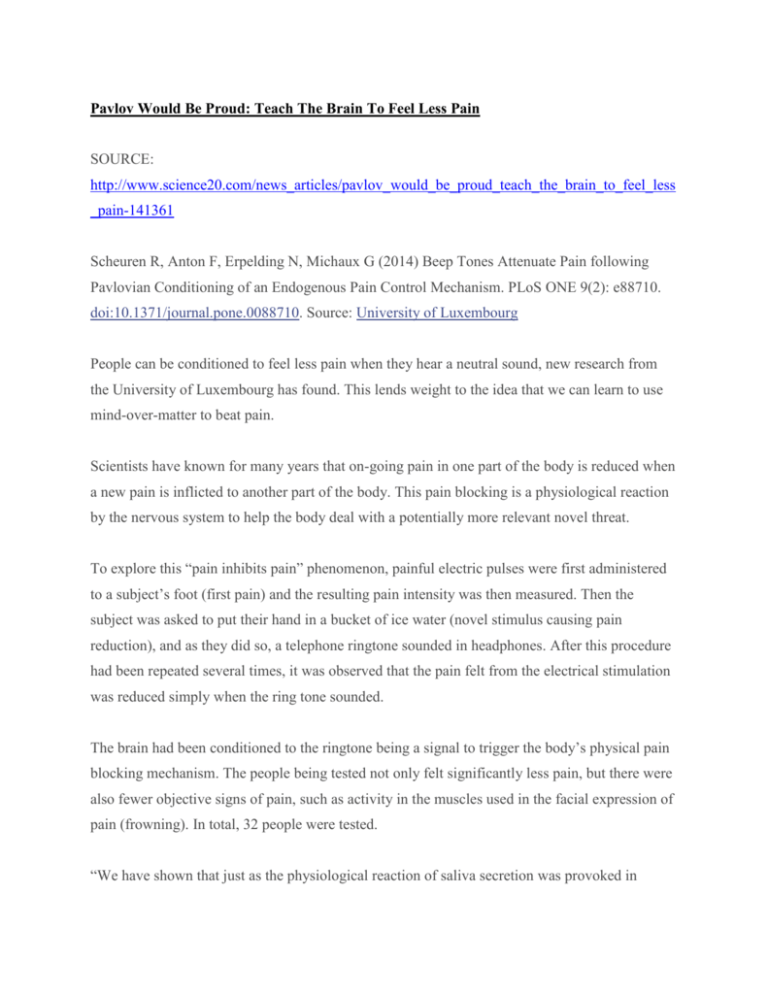
Pavlov Would Be Proud: Teach The Brain To Feel Less Pain SOURCE: http://www.science20.com/news_articles/pavlov_would_be_proud_teach_the_brain_to_feel_less _pain-141361 Scheuren R, Anton F, Erpelding N, Michaux G (2014) Beep Tones Attenuate Pain following Pavlovian Conditioning of an Endogenous Pain Control Mechanism. PLoS ONE 9(2): e88710. doi:10.1371/journal.pone.0088710. Source: University of Luxembourg People can be conditioned to feel less pain when they hear a neutral sound, new research from the University of Luxembourg has found. This lends weight to the idea that we can learn to use mind-over-matter to beat pain. Scientists have known for many years that on-going pain in one part of the body is reduced when a new pain is inflicted to another part of the body. This pain blocking is a physiological reaction by the nervous system to help the body deal with a potentially more relevant novel threat. To explore this “pain inhibits pain” phenomenon, painful electric pulses were first administered to a subject’s foot (first pain) and the resulting pain intensity was then measured. Then the subject was asked to put their hand in a bucket of ice water (novel stimulus causing pain reduction), and as they did so, a telephone ringtone sounded in headphones. After this procedure had been repeated several times, it was observed that the pain felt from the electrical stimulation was reduced simply when the ring tone sounded. The brain had been conditioned to the ringtone being a signal to trigger the body’s physical pain blocking mechanism. The people being tested not only felt significantly less pain, but there were also fewer objective signs of pain, such as activity in the muscles used in the facial expression of pain (frowning). In total, 32 people were tested. “We have shown that just as the physiological reaction of saliva secretion was provoked in Pavlov’s dogs by the ringing of a bell, an analogous effect occurs regarding the ability to mask pain in humans,” said Fernand Anton, Professor of Biological Psychology at the University of Luxembourg. “Conversely, similar learning effects may be involved in the enhancement and maintenance of pain in some patients,” added Raymonde Scheuren, lead researcher in this study. Experimental protocol. Abbreviations: HNCS = heterotopic noxious counter-stimulation, UCR = unconditioned response, CS = conditioned stimulus, CS– = unpaired conditioned stimulus, CS+ = paired conditioned stimulus, CR = conditioned response, TG = test group (N1 = 16), CG = control group (N2 = 16), BL = baseline. (A) Stimulus presentations during the pre-conditioning, conditioning and post-conditioning phases (see further details in the text. (B) Electrical stimulation sequences delivered over each stimulation block. doi:10.1371/journal.pone.0088710
